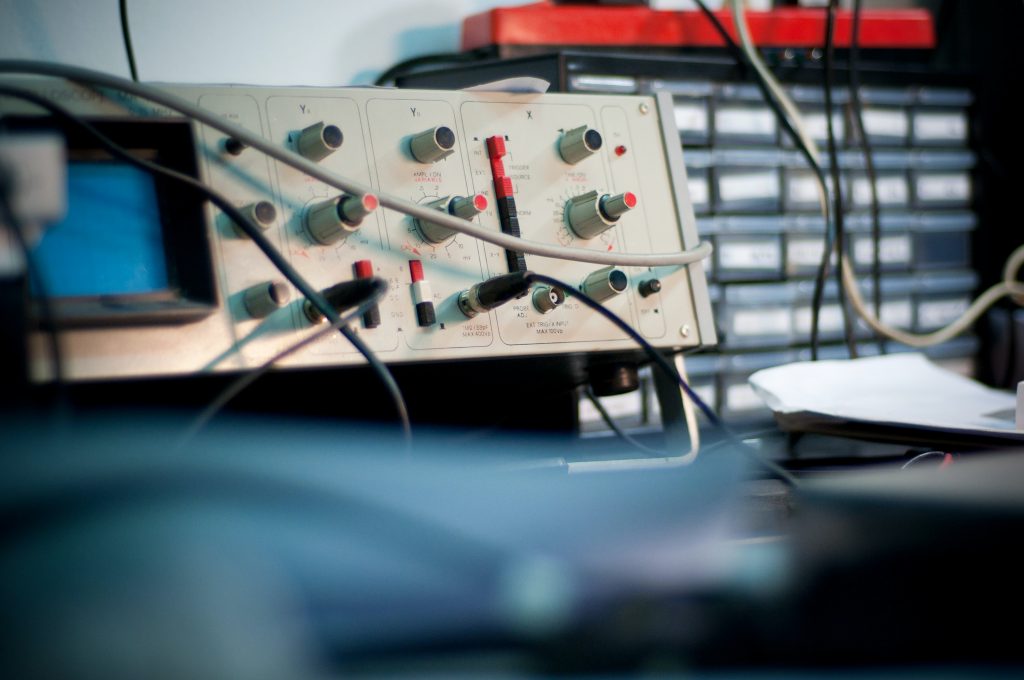Oscilloscopes are indispensable tools for capturing, analyzing, and visualizing electrical signals. Two common types of oscilloscopes are Mixed-Signal Oscilloscopes (MSOs) and Digital Storage Oscilloscopes (DSOs). While both serve essential roles in test and measurement, they have key differences that cater to different needs. In this blog post, we’ll first explore the distinctions between MSOs and DSOs before diving into the unique advantages of MSOs.

What is the Difference Between a Mixed Signal Oscilloscope and a Digital Storage Oscilloscope?
Analog and Digital Signal Handling
• MSOs (such as the Keysight MSO6012A) are designed to capture both analog and digital signals simultaneously. They typically feature multiple analog input channels for voltage measurements and multiple digital input channels for logic-level measurements, offering a unified view of your entire system.
• DSOs (such as the DSO6012A from Keysight) primarily focus on capturing and analyzing analog signals. While they might have multiple analog input channels, they lack dedicated digital input channels for logic-level signal analysis. DSOs are optimized for traditional analog waveform analysis.
Applications
• MSOs shine when it comes to debugging and analyzing complex systems that involve both analog and digital components. They are essential tools for tasks such as embedded systems development, digital communication, power electronics, and microcontroller debugging.
• DSOs are versatile instruments suitable for general-purpose analog signal measurements. They are widely used for waveform characterization, signal integrity analysis, frequency analysis, and troubleshooting analog circuits.
Channel Count
• MSOs often have fewer analog channels than DSOs but compensate for this by offering digital channels. For example, you might find an MSO with 2 or 4 analog channels and 8 or 16 digital channels.
• DSOs frequently offer more analog input channels, such as 2, 4, or even 8 analog channels, but they lack dedicated digital channels.
Complexity
• MSOs tend to be more complex due to their mixed-signal capabilities and additional digital circuitry.
• DSOs come in a wide range of complexities, from affordable entry-level models to high-end instruments with advanced features.

What are the Advantages of Mixed Signal Oscilloscopes?
With a solid understanding of the differences between MSOs and DSOs, let’s explore the advantages that Mixed-Signal Oscilloscopes bring to the table:
Simultaneous Analog and Digital Signal Analysis
The standout feature of MSOs is their ability to capture both analog and digital signals simultaneously. This capability is a game-changer for engineers dealing with mixed-signal systems. With MSOs, you can witness the behavior of digital logic signals side by side with analog voltage waveforms, facilitating efficient debugging and troubleshooting.
Improved Debugging and Troubleshooting
MSOs empower engineers to uncover timing relationships between digital and analog signals. This proves invaluable when hunting down issues related to signal integrity, noise coupling, timing violations, or anomalies occurring at the intersections of analog and digital domains.
Efficient Triggering and Event Identification
Advanced triggering capabilities are another advantage of MSOs. Engineers can set up triggers for specific digital events, patterns, or analog conditions, simplifying the process of capturing moments of interest—a task that can be challenging with separate DSOs for analog and digital signals.
Serial Data Analysis
Many MSOs come with built-in serial data decoding capabilities for popular protocols like I2C, SPI, UART, and CAN. This simplifies the analysis of communication buses common in embedded systems and digital electronics.
Reduced Setup Complexity
Using a single MSO for mixed-signal analysis streamlines your workspace and setup. You no longer need to connect and synchronize separate oscilloscopes for analog and logic measurements, saving you time and reducing the risk of signal interference.
Cross-Channel Measurements
MSOs allow engineers to perform measurements that involve both analog and digital channels. This includes measuring analog signal parameters during digital logic state transitions or identifying analog anomalies during digital signal transitions.
Single-Display Visualization
The unified display of MSOs showcases analog waveforms and digital signals on the same screen. This integration aids in comprehending how different parts of a system interact.
Time-Saving
Quickly identifying and diagnosing issues in mixed-signal systems can significantly expedite project development and testing, leading to a faster time-to-market.
Versatility
While MSOs excel at mixed-signal analysis, they can still be employed for traditional analog measurements, making them versatile instruments suitable for various applications.
Documentation and Reporting
Many MSOs offer features for capturing and documenting waveform data, crucial for generating reports and sharing results with colleagues or clients.
In conclusion, understanding the differences between Mixed-Signal Oscilloscopes (MSOs) and Digital Storage Oscilloscopes (DSOs) is essential for choosing the right tool for your specific testing and measurement needs. MSOs are powerful instruments that simplify the analysis of complex mixed-signal systems, making them indispensable for engineers dealing with the complexities of modern electronics and embedded systems.